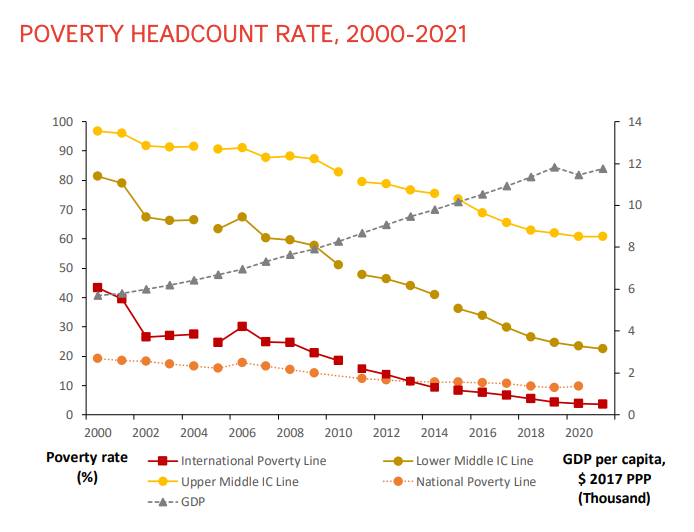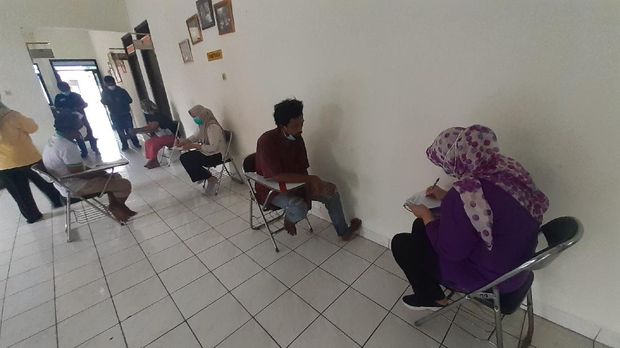Challenge statement
Challenge type: If you are working on multiple challenges, please indicate if this is your "big bet" or "exploratory" challenge.
Please note: we ask you to only submit a maximum of 3 challenges - 1x Big Bet, 2x Exploratory. Each challenge must be submitted individually.
EXPLORATORY
Challenge statement: What is your challenge? (Please answer in specific terms: "Our challenge is that...”.)
Our challenge pertains to People in Need of Social Welfare Services (PPKS) within the context of urban Indonesia, particularly those who are often identified by the Indonesian Ministry of Social Affairs as homeless, beggars, and scavengers. [1]
Specifically, despite the government’s social rehabilitation efforts, many who fall under these categories tend to return to the streets after receiving training and guidance. The lab therefore aims to address this gap by exploring potential collaborations with the government and social enterprises.
[1] https://dinsos-jogjaprov-go-id.translate.goog/jenis-jenipmks/?_x_tr_sl=id&_x_tr_tl=en&_x_tr_hl=en&_x_tr_pto=sc
Background: What is the history of your challenge? What is causing or driving it? Who is involved? How does the current situation look like? What undesired effects does it produce?
The social problem of PPKS is not new; it has a deep historical root in Indonesia and continues to this day, particularly in big cities that have attracted the poor with low education levels and limited access to services related to health, education, and skills development. [1]
There are multiple causes and drivers of the PPKS phenomena, including unavailability of jobs, geographical constraints in hometown regions, and other economic, socio-psychological, and socio-cultural factors of poverty. [2]
For example, begging may lead to a relatively large income, which causes some to be reluctant in pursuing other more formal jobs. Article 34 of the 1945 Constitution gives responsibility for the state to take care the poor and abandoned children. [3]
Meanwhile, Government Regulation No. 39 of 2012 mandates the central and regional governments to implement social rehabilitation as a part of social welfare program. [4]
Currently, social rehabilitation efforts are delivered by the Ministry of Social Affairs (Kemensos) through home care/residential institutions, such as Panti/Balai and Lembaga Kesejahteraan Sosial (LKS).
Nevertheless, several studies have documented gaps related to social rehabilitation efforts, which could lead to undesired effects, including the return of homeless people, beggars, and other PPKS to resume their previous activities on the streets. [5]
[1] https://www.inews.id/news/nasional/sejarah-asal-usul-pengemis-di-indonesia-berawal-dari-tradisi-masa-kesunanan-surakarta
[2] https://media.neliti.com/media/publications/[REDACTED_ID]-social-rehabilitation-for-vagrants-and-b-8ef7568e.pdf; https://dinsos.bandaacehkota.go.id/mengurai-fenomena-gelandangan-dan-pengemis-di-indonesia/
[3] https://jdih.kemenkeu.go.id/fulltext/2009/11TAHUN2009UUPenjel.htm#:~:text=Pasal%2034%20ayat%20(1)%20Undang,fakir%20miskin%20dan%20anak%20terlantar
[4] https://media.neliti.com/media/publications/[REDACTED_ID]-social-rehabilitation-for-vagrants-and-b-8ef7568e.pdf
[5] https://www.researchgate.net/publication/[REDACTED_PHONE]_UPAYA_REHABILITASI_SOSIAL_DALAM_PENANGANAN_GELANDANGAN_DAN_PENGEMIS_DI_PROVINSI_DKI_JAKARTA; https://media.neliti.com/media/publications/[REDACTED_ID]-social-rehabilitation-for-vagrants-and-b-8ef7568e.pdf
Quantitative evidence: What (official) data sources do you have on this challenge that better exemplifies the importance and urgency of this frontier challenge? You can add text, a link, or a picture.
According to the World Bank data, poverty in Indonesia has been in decline over the years. [1] This trend was observed both in urban and rural areas (see attached image). However, there was a slight increase in 2022, where poverty reached 9.57% in September 2022, according to the Central Bureau of Statistics (BPS) data. This amounts to a total of 26.36 million people. [2] Moreover, this indicates a big gap with the 2020-2024 National Medium-Term Development Plan (RPJMN) target of 7%. [3]
A visible implication of this is the persistence of PPKS on the streets of big Indonesian cities, such as Jakarta. According to the Kemensos, there are approximately 77,500 homeless and beggars throughout big cities. [4] In Jakarta, persisting urban issues contributed to an estimated number of 2,659 PPKS in 2021. However, the Kemensos admits how the reported number of 77,500 is likely to be heavily underestimated, given how urban poverty is a dynamic issue that leads to difficulties in data collection. A report by the National Planning Agency (BAPPENAS) indicates how data collection done through home care/residential institutions tend to be passive, following the number of PPKS reached by their programs. [5] In short, there is no comprehensive data on the PPKS number and the urban areas where they are most active, which implies the need for better mapping.
[1] https://databankfiles.worldbank.org/public/ddpext_download/poverty/987B9C90-CB9F-4D93-AE8C-750588BF00QA/current/Global_POVEQ_IDN.pdf
[2] https://www.bps.go.id/pressrelease/2023/01/16/2015/persentase-penduduk-miskin-september-2022-naik-menjadi-9-57-persen.html#:~:text=Jumlah%20penduduk%20miskin%20pada%20September,53%20persen%20pada%20September%202022.
[3] https://www.cnbcindonesia.com/news/20230130093133-4-409177/duh-target-kemiskinan-pak-jokowi-di-2024-sulit-dicapai#:~:text=Jakarta%2C%20CNBC%20Indonesia%20%2D%20Kepala%20Badan,sebesar%200%25%20pada%20akhir%202024.
[4] https://nasional.kompas.com/read/2019/08/22/21281421/diperkirakan-ada-77500-gepeng-di-kota-kota-besar-di-indonesia
[5] https://sikompak.bappenas.go.id/storage/app/uploads/public/635/f64/bb5/635f64bb530d1829652950.pdf
Source: https://databankfiles.worldbank.org/public/ddpext_download/poverty/987B9C90-CB9F-4D93-AE8C-750588BF00QA/current/Global_POVEQ_IDN.pdf
Qualitative evidence: What weak signals have you recently spotted that characterizes its urgency? Please provide qualitative information that better exemplifies the importance and urgency of this frontier challenge. You can add text, a link, or a picture.
On top of this, social rehabilitation programs provided by government home care/residential institutions are varied in terms of their services. Some continue to face challenges in terms of limitations in human resources (e.g., social workers), budget support, and cooperation and coordination between government organizations at the provincial, regency/municipal, and central government along with other stakeholders. [1]
There have been emerging signals that indicate how new initiatives that engage social enterprises could complement existing government-led social rehabilitation and inclusion programs. For example, a recent survey of 4,500 respondents in six Southeast Asian countries indicates how 74% of Indonesian consumers prefer socially conscious brands and 83% demand more brands to generate positive impact in the community. [2] Unfortunately, outside of home care/residential institutions, approach to poverty in Indonesia has largely been charity-based. In this sense, there is a lack of entrepreneurship initiatives led by social enterprises or other civil society actors to empower PPKS, particularly the homeless and beggars.
Nevertheless, such initiatives are not unprecedented. In India, for instance, an NGO launched a project to help them beggars earn a living by making items such as laptop and conference bags. [3] In Bali, a social enterprise pursued similar capacity-building projects, where proceeds of sales of products generated by the poor are being reinvested to support and enlarge the business. [4] These examples suggest how a similar approach could be adopted in the context other cities across Indonesia.
[1] https://media.neliti.com/media/publications/372422-social-rehabilitation-for-vagrants-and-b-8ef7568e.pdf
[2] https://www.thejakartapost.com/opinion/2022/09/02/consumers-demand-compels-private-sector-to-adopt-sdgs-all-the-way.html
[3] https://economictimes.indiatimes.com/industry/indl-goods/svs/construction/bharat-realty-venture-is-adding-more-shimmer-to-the-skyline-of-mumbai-suburbs/articleshow/97677712.cms
[4] https://www.nowbali.co.id/muntigunung-a-light-at-the-end-of-the-tunnel-for-balis-poverty-problem/
Source: https://news.detik.com/berita/d-5324379/ini-balai-rehabilitasi-sosial-pangudi-luhur-tempat-kemensos-bina-gelandangan
Value proposition: What added value or unique value proposition is your Accelerator Lab bringing to solving this challenge? Why is it your Lab that needs to work on this challenge and not other actors within UNDP, other stakeholders in the country respectively? Why is it worth investing resources to this challenge?
As an agile entity within the UNDP network, the UNDP Accelerator Lab team in Indonesia is strategically situated between grassroots communities (including PPKS), local innovative social enterprises, and government stakeholders. The Accelerator Lab is well-positioned to explore ways to foster partnerships between these actors in creating more responsive institutions and stronger social rehabilitation efforts. The Lab aspires to partner with key government agencies in creating stronger links between PPKS and social enterprises, thereby ushering in new opportunities for the former’s entry to the formal labour market.
Internally within UNDP Indonesia CO, this initiative presents a new opportunity for support to and collaboration with the Democratic Governance and Poverty Reduction Unit (DGPRU), as well as the unit’s new partnership with Kemensos and other stakeholders. This aligns well with UNDP’s concept of governance [1], which does not only include the state but also the private sector and civil society. [2] It also fits a rights-based lens [3], where governance encompasses the responsibility of these actors to not only reach but also empower marginalized groups, including the poor.
[1] Governance comprises of the mechanisms, processes and institutions, through which citizens and groups articulate interests, exercise legal rights, uphold obligations and mediate differences
[2] http://www.undp-aciac.org/publications/other/undp/governance/undppolicydoc97-e.pdf
[3] https://www.tandfonline.com/doi/full/10.1080/[REDACTED_PHONE]
Short “tweet” summary: We would like to tweet what you are working on, can you summarize your challenge in a maximum of 280 characters?
UNDP Accelerator Lab Indonesia is collaborating with Government of Indonesia and innovative community social enterprises in turning persons with social welfare problems (PPKS), especially the homeless and beggars, into entrepreneurs through vocational trainings.
Partners
Who are your top 5 partners for this challenge? Please submit from MOST to LEAST important and state Name, Sector and a brief description of the (intended) collaboration.
Please state the name of the Parter:
Community social enterprises (e.g., Sukkha Cita, Studio Dapur, Muntigunung, Du Anyam)
What sector does our partner belong to?
Private Sector
Please provide a brief description of the collaboration.
These local social enterprises focus on creating products such as handicrafts by empowering grassroot communities in the process. In this collaboration, 2-3 of these social enterprises will be engaged as the main partners responsible for training the homeless and beggars as new entrepreneurs.
Is this a new and unusual partner for UNDP?
Yes
Who are your top 5 partners for this challenge? Please submit from MOST to LEAST important and state Name, Sector and a brief description of the (intended) collaboration.
Please state the name of the Parter:
Ministry of Social Affairs (Kemensos)
What sector does our partner belong to?
Government (&related)
Please provide a brief description of the collaboration.
Kemensos is the Indonesian ministry responsible in the areas of social rehabilitation, social security, social empowerment, social protection, and handling the poor to assist the President in administering the state governance and inclusivity. [1] The main role of Kemensos in this collaboration is to participate in the design and oversight of the project.
[1] https://kemensos.go.id/tugasfungsi
Learning questions
Learning question: What is your learning question for this challenge? What do you need to know or understand to work on your challenge statement?
1. Where are the hotspots for begging activities and homeless encampments within big cities in Indonesia (e.g., Jakarta)?
2. What are the socio-economic profiles and latent skills of homeless people and beggars?
3. How effective are the current social rehabilitation efforts by the Indonesian government?
4. How can community social enterprises work toward empowering the poor to become entrepreneurs?
To what stage(s) in the learning cycle does your learning question relate?
Sense, Explore
Usage of methods: Relating to your choice above, how will you use your methods & tools for this learning question? What value do these add in answering your learning question?
If feasible, data visualization through GIS mapping will provide context on the spatial distribution of homeless encampments and begging hotspots in a big city like Jakarta. Meanwhile, ethnographic methods, which include surveys, interviews, and FGDs, will be employed to assess aspects such as PPKS’ socioeconomic data, vocational skills, and training experience, as well as effectiveness of social rehabilitation efforts to date. Data collection will also draw on behavioral insights to identify the psycho-social determinants to street begging.
Overall, the design of the vocational training project will involve the process of co-creation with government partners and social enterprises. Funding to social enterprises can be potentially disbursed through results-based financing (RBF), namely upon the achievement of tangible results, such as the number of PPKS trained and/or the number of PPKS’ products sold.
Existing data gaps: Relating to your choice above, what existing gaps in data or information do these new sources of data addressing? What value do these add in answering your learning question?
As discussed above, there are various data gaps related to PPKS in Indonesia. These include real versus reported number of PPKS, as well as spatial distribution of PPKS-related activities and encampments, which can be partly addressed through GIS. Ethnography involving members of PPKS and government officials at home care/residential institutions will hopefully reveal further insights relating to their socio-economic backgrounds, latent skills, behaviors, and aspirations, as well as the effectiveness of current social rehabilitation efforts and the newly proposed vocational training project.
Closing
Early leads to grow: Think about the possible grow phase for this challenge - who might benefit from your work on this challenge or who might be the champions in your country that you should inform or collaborate with early on to help you grow this challenge?
If successful, this innovation can be gradually adopted by a wider network of social enterprises and across wider areas (i.e., other cities) in Indonesia. Potential scale-up of this approach, however, is dependent on early collaborations with and support from potential champions identified above, including Kemensos, Bappenas, and Kadin.
END OF ACTION LEARNING PLAN: Thank you! The form saves automatically and your submission has been recorded. You may now exit this window.
-




 1No poverty
1No poverty 8Decent work and economic growth
8Decent work and economic growth 17Partnerships for the goals
17Partnerships for the goals
Comments
Log in to add a comment or reply.